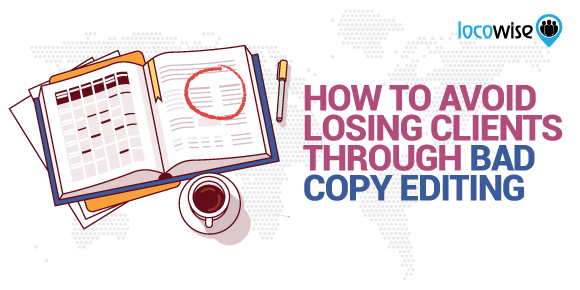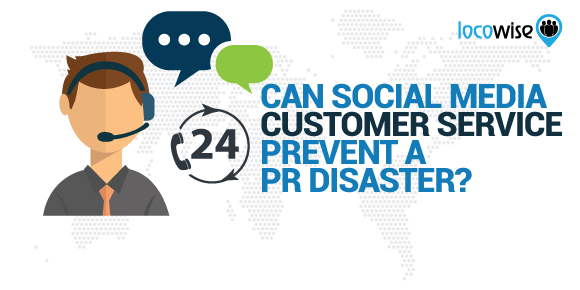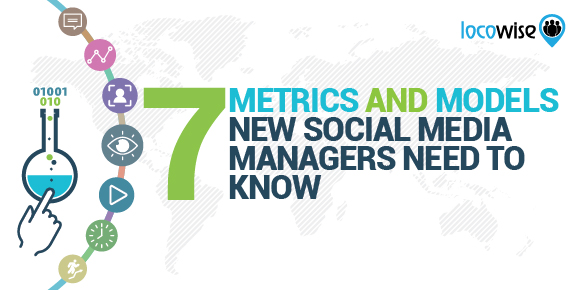How To Avoid Losing Clients Through Bad Copy Editing
Sahail Ashraf posted on 2 January 2018
Editing can be an absolute nightmare, and it can be a deal-breaker. Your agency’s prospects will check out your website, and your previous work if they are intending to discuss a project with you.
And if they see that you’re making spelling errors, or grammatical errors, they will see you as sloppy. Good agencies don’t cut corners, and they do the very best for clients. At the same time, the style of what is written has to be client-focused.
That includes all the work that goes into the finished result, especially presentation. There are ways around the problem. A few good ideas and a lot of discipline are usually enough to bring a culture of high quality editing to all your work.
But first, a horror story.

When things go really badly
We have all heard about the poor quality emails that get sent out by accident, or to the wrong person, but there are one or two examples of social media usage in the last few years that are truly catastrophic.
We know you may be aware of the situation that Yahoo Finance got itself into, but the story definitely bears repeating, if only as a cautionary tale that will help brands do a final check or two before they press ‘send’.
One day in Yahoo Finance World, someone sent out a news story that featured President Donald Trump. He’s always in the news and he often does lots of ridiculously weird stuff that makes him seem more unhinged than he was the previous day. And this may have created a climate of laziness at Yahoo.
The tweet was meant to say:
‘Trump wants a much bigger navy. Here’s how much it’ll cost’
Unfortunately, the bad editing resulted in the person responsible for the tweet pressing ‘n’ on the keyboard rather than ‘b’. The keys are close together, but that kind of reasoning didn’t excuse the mistake. Yahoo Finance received a barrage of complaints and there was a very public apology on Twitter hours later. However, by the time the apology came out, the damage to the brand’s profile had been done.
The headline (with the offending letter in it) managed to develop its own hashtag online, as Twitter users complained to Yahoo, calling them out for the awful mistake. The good news is that it was an obvious mistake. This didn’t make people feel any better, but everyone generally understood that these things can happen.

If similar things happen at your agency though, with your clients, you’re looking at a situation that can cause huge media fallout, and quite possibly the loss of business. It is vital that work done for clients is thoroughly edited before it goes out.
Get the team on it
While it’s perfectly acceptable (and common) for one person to handle a client account, it makes sense to have an editing process inside of that. Let’s assume that Team Member A handles Twitter for one of your biggest clients. Team Member B handles everything else.
A and B need to talk. Having someone else on the team who is there every day means that tweets, for example, can be checked through by a fresh pair of eyes. We’ve all been in the same situation, where we don’t spot mistakes because we are so focused on deadlines. Handing your list of tweets over to a colleague to have a quick look at is a great way to push the work through a basic editing process.
Be the enemy of ambiguity
Your aim as a digital agency is to help clarify and strengthen a client’s communications. It won’t help if what you are posting on their behalf is easy to misunderstand. One of the biggest ways to develop any kind of misunderstanding is ambiguity, or just simply a lack of clarity.
Using your team, put things in place that ensure your words are never misunderstood. Focus on having all tweets, posts and other elements go through a strict and rigid proofing process. But this goes beyond spelling and grammar. The whole idea is that you are clear.
Does the social media content work you are creating and sending out make sense? Is it clear and open enough that people who don’t have the first idea about the brand can easily understand it?
The more you work towards making everything crystal clear, the more the brand will be successful. You should be able to expect someone on the street to look at a post and have a complete understanding. This is a big part of your copy editing. Short of creating a house style guide, you should have everything checked at least twice for clarity.
And about that house style
It really is a good idea (if not an essential) to develop a house style guide alongside your client and their branding team. When we use the word ‘guide’, we mean ‘the rules’.
Perhaps the best things to include are phrases that you never use within client’s work. You can also highlight the tone you use for clients of certain sizes. In addition, cover areas such as proofing and how to manage it.
Be sure to insert words and phrases (or at least guidance) that are never to be used. As you move forward with a style guide (it doesn’t have to be written in stone immediately) you will find that it grows with your understanding of your clients, their brand and their needs.

The measurement part
Creating content for social media is unique in that it is very easy to get almost instant feedback on how you are doing. This works even better if you’re paying attention to feedback as part of the editing process. Look at your metrics to move things along.
Your metrics should throw up the words and phrases that most resonate with your audience. This is part of the editing process because if you are able to find words and phrases that work, this means that they are worthy of repeating. At the same time, concentrate on omitting the words that don’t gain any kind of engagement.

The way forward
Copy editing in social media is about having full control over the work you do for clients. In that sense, it’s not always about spelling and grammar. You will lose clients if you aren’t being professional and focused on content.
Take the time to look at what you do, and how you do it. Then, make sure you are setting some high standards, and that you are on message for clients, all the time. That way, world class editing (content and style) will be something your clients expect from you. And why they will stay with you.
When it comes to editing and looking at what works, you need a metrics platform that does it all. We think Locowise is that platform. For a free 7 day trial, get in touch.




